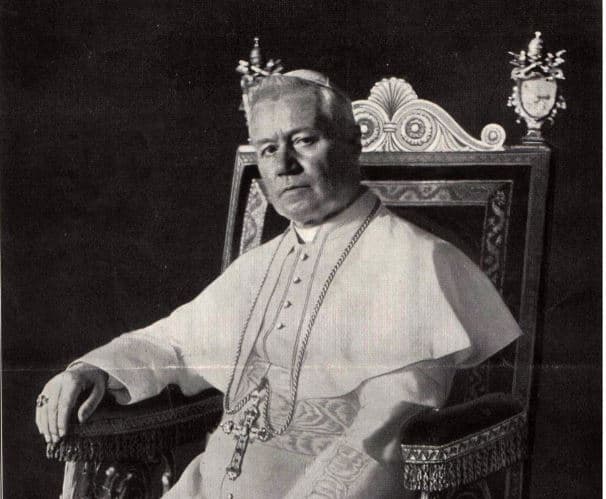ROME – Two days ago, the Church marked the liturgical feast of St. Pius X, who reigned from 1903 to his death on August 20, 1914, and who was canonized in 1954. To mark the occasion, Vatican news carried a laudatory interview with an Italian historian styling Pius X as a “Pope-Reformer of the Church.”
In itself, that may seem a “dog bites man” kind of story, i.e., the most predictable thing in the world. Vatican communications outlets, after all, are in the habit of saying nice things about popes.
Moreover, there’s a specific reason for Francis and his team to be partial to Pius X: He revoked ecclesiastical sanctions for the tango, the salacious dance forever associated with Francis’s native Argentina, which at the time was being introduced into Europe and raising hackles among some disapproving Catholic souls.
(According to historian Gianpaolo Romanato, after seeing an exhibition of the tango, Pius X announced that while he preferred the furlana, a dance named for the northeastern Italian region of Friuli, he saw no great sin in the Argentine import.)
Yet there’s also a grand irony in the Vatican’s praise for Pius X, because there’s obvious dissonance between his papacy and that of the current occupant of the Throne of Peter, Pope Francis.
Pius X was the great anti-modernist pope, the one who directed the Holy Office to issue Lamentabili sane exitu, condemning 65 specific alleged modernist errors, which was followed by his encyclical Pascendi Dominici gregis. In 1910, the Holy Office published an anti-modernist oath to be taken by all clergy, religious and seminary teachers. To enforce it, Pius X encouraged “vigilance committees” in every diocese, which were to root out anyone suspected of modernist tendencies, and whose work was to be carried out in complete secrecy.
All that seems worlds away from Francis’s approach. Francis routinely encourages dialogue and friendship with the sciences, and nothing appears to irritate him more than “pharisaical,” “rigid” and “legalistic” forms of religion. Today’s version of the integralists are generally this pope’s biggest headaches, and it’s no accident that the breakaway group founded by the late French Archbishop Marcel Lefebvre, which rejects changes introduced by the Second Vatican Council, calls itself the “Society of St. Pius X.”
Francis seems more in sync with Pius X’s successor, Benedict XV, who basically ended the anti-modernist crackdown in his first encyclical, Ad Beatissimi Apostolorum.
“Let each one freely defend his own opinion, but let it be done with due moderation, so that no one should consider himself entitled to affix on those who merely do not agree with his ideas the stigma of disloyalty to faith or to discipline,” he wrote.
(That was a hundred years ago, mind you, in the pre-Twitter era. One wonders what Benedict XV would make of Catholic conversation today.)
So, why would Pope Francis’s Vatican go out of its way to praise the anti-modernist pope?
To begin with, Friday’s writeup never even mentioned Lamentabili or the oath, and alluded to Pascendi only in passing. In fact, there’s more attention given to the tango and the fact that Pius X created history’s first Latin American cardinal (Joaquim Arcoverde Cavalcanti of Brazil).
That emphasis is part of a broad revision of Pius’s reputation in recent years, styling him not a policeman but a great reformer.
The interview with Romanato focuses largely on Pius’s reforms – abolishing the so-called “veto” in papal conclaves once wielded by European monarchs and emperors (the last use of which, by the way, brought him to power), reorganization of the Roman Curia (transitioning away from a focus on temporal governance and towards internal ecclesiastical management), issuing a comprehensive Code of Canon Law, publishing a new Catechism, and placing the Eucharist at the center of Catholic spirituality and practice.
It’s also worth noting that despite his anti-modernist agenda, Pius X nonetheless issued Il fermo proposito in 1904, for the first time authorizing Catholics to vote in elections in the new Italian state. Pius didn’t cancel the earlier papal decree banning such participation, but he granted broad exceptions and thus contributed to resolving the “Roman Question.”
As Romanato wrote in 2008, the magnitude of Pius’s reform should not be underestimated.
“What was still in the second half of the 19th century a federation of national Churches was transformed into a unified international organization, directed by the pope in discipline and theology,” Romanato said.
On that front, Pius and Francis are very much kindred spirits, since Francis too is trying to engineer a sweeping reform of the Vatican. They even share something in terms of style, since Pius didn’t really trust the offices of the Curia to reform themselves and thus preferred to work through his own private secretariat, known as the segreteriola. Francis, too, often prefers to work around the Curia rather than through it.
Those similarities between Pius X and Francis, despite the obvious political and theological gap, may suggest an important lesson.
Even with the hyper-politicization of nearly everything in the early 21st century, there still is a surprisingly large swath of matters that don’t break left v. right. Efforts to rationalize the administrative structures of the Vatican, for example – to break cycles of corruption, to improve efficiency and to make better use of limited resources – don’t really have much to do with ideology.
In other words, Vatican reform ought to be something both sides in the wars of culture within the Church can support, and even Francis’s fiercest critics should take some satisfaction in seeing him try to resurrect Pius X’s legacy in that regard.
Whether that will be enough finally to break the grip of vested interests and cultural inertia that have proven so successful in the past in taming reform efforts, however, is another question entirely.
Follow John Allen on Twitter at @JohnLAllenJr.















